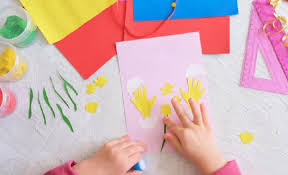Why do some children seem to be able to generate many ideas while others don’t have such tendencies? Does your child have trouble coming up with ideas? Don’t worry. Some techniques can restructure your child into an idea generator.
This article will look at the top secrets of Idea generation in a gifted child. Idea generation is the starting point of creativity, specifically for new products, innovative solutions, or innovative business models. There are a variety of idea-generation techniques to help create new ideas.
The process of coming up with new concepts is called ideation. Ideation means the generation of ideas, and these ideas become innovations when they are fully implemented. Innovations improve our quality of life, and entrepreneurs create jobs by commercializing them.

What is idea generation?
Idea generation in a gifted child can be thought of as a way to develop and share authentic, imagined, or artistic ideas.
Intelligent parents use this technique to find solutions to difficulties. Idea generators create, develop, and communicate abstract, concrete, or visual ideas.
Ideas are the starting point for implementing changes. Ideas, in theory, should lead to constructive change.
This might be any place, including an area, a firm, or the entire planet. Adopting idea-generation exercises may be a better way to boost classroom creativity.
It starts with a look at the creative process so that the role of idea generation in classroom innovation can be discussed. It then looks at the value of providing opportunities for ideas to foster classroom creativity.
How to generate ideas?
The creative process of discovering, developing, and conveying new ideas is known as “ideation.”
Ideation encompasses the entire thought cycle, from innovation to development to actualization. How can our children generate ideas in the first place? There are several ways which include:
1. Make inquiries.
People with idea-generation abilities are naturally inquisitive. They ask many questions, both of others and especially of themselves. They will always be curious about who, what, where, when, why, and “how.” Making inquiries is an effective way to generate ideas.
2. Write down your ideas:
An idea generator keeps records, writes down ideas, and makes lists. Edison, for example, had hundreds of notebooks filled with notes and ideas. Leonardo da Vinci’s thoughts are written in a mirrored form and have exciting drawings. So keep those ideas coming! Jot them down because it is also an effective way to generate ideas in a gifted child.
3. Thinking Associatively:
Many inventions today result from associative thinking. Associative thinking is taking an idea from one concept and applying it to another opportunity, situation, and Possibility. Steve Jobs is a good example. He was very good at putting new ideas in computer technology to use in new ways. He appreciated the artistic aspect of science and made Apple’s products simple and beautiful. People often come up with new ideas when they try to see things from different points of view and are good at adapting what they already know to new situations.
4. Put Concepts to the Test:
Putting concepts to the test is another importance of idea generation in a gifted child. Innovators understand the value of experimentation. Encourage your children to try generating at least five ideas over a given task. Then go ahead to test the various ideas. Experimentation is key to many advancements.
5. Establish a thinking time
A powerful method of coming up with ideas is to create a thinking time and make good use of it. Setting aside 15–30 minutes daily to think can help anyone gain clarity and achieve set goals. I have written an article on a gifted child’s critical and creative thinking. A child can use some of his thinking time to develop ideas for improving things around him.
Ideas do not only mean setting up a new business or finding a creative solution to a problem faced by thousands of people. Encouraging your children to improve themselves through small practices is a good idea in and of itself.
For example, they can use their thinking time for ideas on:
Increase their patience
How to be an understanding children
Building better rapport
How to be a loving child and student
6. Apply knowledge of one area to another
When a gifted child is taught idea generation, he can apply knowledge from one area of life to another. There were things we believed in the past to be accurate, but today scholars have proven them wrong.
A scholar can use the physics of relationships and ideas from psychology to make better investments. Warren Buffet’s billionaire business partner, Charlie Monger, has put together a framework for making decisions by taking views from economics, psychology, physics, and anthropology.
His investment choices are based on the lessons he learned in different areas, starting from childhood. When you check his recommended reading list, you will discover that most books deal with one or more items on the list. He made those suggestions not because they were interesting. Instead, he sees a lot of value in them because he can use them to study how different people make decisions.
“One bit of advice,” said Elon Musk: “it is essential to view knowledge as a semantic tree.” “Make sure your children understand the fundamental principles of life, such as the trunk and large branches, before they get into the leaves or details, or they will have nothing to hang on to.”
Elon Musk has always seen knowledge as a web of connections, even though he has always said that the most important thing is to strengthen the core ideas first. He suggests moving knowledge from one area to another, which can only be achieved by developing new ideas.
Refrain from using your expertise across different fields when thinking of ideas. Spending time sharpening a child’s awareness opens their mind to other ideas and perspectives.

What is the importance of idea generation in children?
The growth of a child’s creativity depends on how well they can develop new ideas. There are likely some good reasons their schools should use an idea management tool or schedule a brainstorming session just for idea generation. However, we would like to emphasize the significance of idea generation in a gifted child.
1. Identification of new opportunities
Children who can generate ideas are open to many academic and social activities. Because they are good at brainstorming, it helps them identify new opportunities when they occur to them.
2. Development of new ideas
New ideas are the lifeblood of any individual, and a child cannot succeed in the development of new ideas without the ability to think critically. All children desire mental growth. Idea generation keeps a child’s wheels turning, especially academically, by developing new strategies to solve old problems and finding new ones to solve them.
3. Refine old ideas
Challenge these paradigms on purpose to see what a child knows to be “true” from a different point of view. You’ll need to build a safe space where people aren’t threatened when their way of problem-solving is challenged. This will help refine old ideas and practices
4. Update current practices
New ideas often help keep what we’re doing up-to-date with current practices. Not every instance of new idea development needs to arrive like a lightning bolt from the sky; sometimes, shaking the dust off what we’re doing now is simply enough.
5. Analyzing the world around them
Teach a child how to analyze the world around them. They meet people every time they step outside the door, and they are faced with new life experiences daily.
Teach a child how to use his day-to-day experience to think more deeply about the issues that confront him. Every child will be exposed to plenty of ideas when they are taught how to come up with them.
Here are some examples:
Children should be able to ask themselves this question to come up with ideas.
How can I read more?
What can I do to be more effective academically?
What am I not doing well?
How can I be better at my studies?
When do I spot or grab opportunities?

Conclusion
You hear a famous person talking about how a small idea became a huge success. Refrain from pursuing poor ideas. Poor ideas can cause frustration and depression in a perfectionist child, leading to abnormal behavior. Idea generation is more than being a clever, intelligent, or gifted child. Every child can develop powerful ideas if they put in the effort and patiently wait. If they wait for pictures to show themselves, they might end up waiting endlessly.
Begin teaching your children about idea generation as soon as possible. As they keep growing, they will master the generation of quality ideas.
Mind mapping is a technique used in brainstorming or thinking deeper about a core idea. For example, to improve a child’s public speaking skills, he can use mind maps to think of avenues to make it happen. A child can use mind mapping to develop new ways to improve and carry out an idea.
See the solution to anxiety and depression here
Follow us at https://abundanceandkiddies.com/
